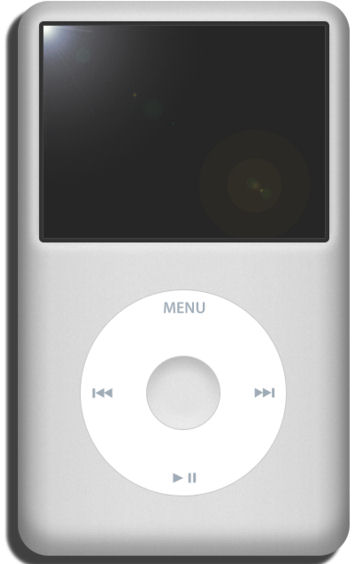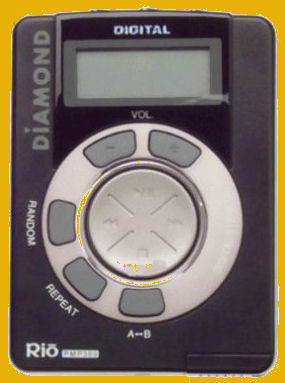|
Radschool Association Magazine - Vol 37 Page 10 |
|
Privacy Policy | Editorial Policy | Profit Policy | Join the Association | List of Members | Contact us | Index | Links |
|
|
|
Qantas.
With Qantas in the middle of considerable industrial problems, it is appropriate that we include part of Senator Xenophon's speech of 23rd August to the Australian Parliament.
Senator XENOPHON: (South Australia) “I rise to speak tonight on an issue that is close to the hearts of many Australians and that is the future of our national carrier, Qantas. At 90, Qantas is the world's oldest continuously running airline (KLM is older but stopped operating during WW2 - tb). It is an iconic Australian company. Its story is woven into the story of Australia and Australians have long taken pride in the service and safety standards provided by our national carrier. Who didn't feel a little proud when Dustin Hoffman uttered the immortal line in Rain Man, 'Qantas never crashed'?
While it is true that Qantas never crashes, the
sad reality is that Qantas is being deliberately trashed by
management in the pursuit of short-term profits and at the expense
But first we need to ask ourselves: why? Why would management want Qantas to look unprofitable? Why would they want to hide the cost of a competing brand within their group, namely Jetstar, in amongst the costs faced by Qantas?
To understand that, you need to go back to the days when Qantas was being privatised. When Qantas was privatised the Qantas Sale Act 1992 imposed a number of conditions, which in turn created a number of problems for any management group that wanted to flog off parts of the business. Basically, Qantas has to maintain its principal place of operations here in Australia, but that does not stop management selling any subsidiaries, which brings us to Jetstar.
Qantas has systematically built up the low-cost carrier at the expense of the parent company. I have been provided with a significant number of examples where costs which should have been billed back to Jetstar have in fact been paid for by Qantas. These are practices that I believe Qantas and Jetstar management need to explain. For example, when Jetstar took over the Cairns-Darwin-Singapore route, replacing Qantas flights, a deal was struck that required Qantas to provide Jetstar with $6 million a year in revenue. Why? Why would one part of the business give up a profitable route like that and then be asked to pay for the privilege? Then there are other subsidies when it comes to freight. On every sector Jetstar operates an A330, Qantas pays $6,200 to $6,400 for freight space regardless of actual uplift. When you do the calculations, this turns out to be a small fortune. Based on 82 departures a week, that is nearly half-a-million dollars a week or $25½ million a year.
Then there are the arrangements within the airport gates. In Melbourne, for example, my information from inside the Qantas group is that Jetstar does not pay for any gates, but instead Qantas domestic is charged for the gates. My question for Qantas management is simple: are these arrangements replicated right around Australia and why is Qantas paying Jetstar's bills? Why does Qantas lease five check-in counters at Sydney Terminal 2, only to let Jetstar use one for free? It has been reported to me that there are other areas where Jetstar's costs magically become Qantas's costs. For example, Jetstar does not have a treasury department and has only one person in government affairs. I am told Qantas's legal department also does free work for Jetstar.
Then there is the area of disruption handling where flights are cancelled and people need to be rebooked. Here, insiders tell me, Qantas handles all re-bookings and the traffic is all one way. It is extremely rare for a Qantas passenger to be rebooked on a Jetstar flight, but Jetstar passengers are regularly rebooked onto Qantas flights. I am informed that Jetstar never pays Qantas for the cost of those rebooked passengers and yet Jetstar gets to keep the revenue from the original bookings. This, I am told, is worth millions of dollars every year. So Jetstar gets the profit while Qantas bears the costs of carriage. It has also been reported to me that when Qantas provides an aircraft to Jetstar to cover an unserviceable plane, Jetstar does not pay for the use of this plane.
Yet another example relates to the Qantas Club. Jetstar passengers can and do use the Qantas Club but Jetstar does not pay for the cost of any of this. So is Qantas really losing money? Or is it profitable but simply losing money on paper because it is carrying so many costs incurred by Jetstar? We have been told by Qantas management that the changes that will effectively gut Qantas are necessary because Qantas international is losing money but, given the inside information I have just detailed, I would argue those claims need to be reassessed.
Indeed, given these extensive allegations of hidden costs, it would be foolish to take management's word that Qantas international is losing money. So why would Qantas want to make it look like Qantas international is losing money? Remember the failed 2007 private equity bid by the Allco Finance Group. It was rejected by shareholders, and thank goodness it was, for I am told that what we are seeing now is effectively a strategy of private equity sell-off by stealth.
Here is how it works. You have to keep Qantas flying to avoid breaching the Qantas Sale Act but that does not stop you from moving assets out of Qantas and putting them into an airline that you own but that is not controlled by the Qantas Sale Act. Then you work the figures to make it appear as though the international arm of Qantas is losing money. You use this to justify the slashing of jobs, maintenance standards and employment of foreign crews and, ultimately, the creation of an entirely new airline to be based in Asia and which will not be called Qantas. The end result? Technically Qantas would still exist but it would end up a shell of its former self and the Qantas Group would end up with all these subsidiaries it can base overseas using poorly paid foreign crews with engineering and safety standards that do not match Australian standards. In time, if the Qantas Group wants to make a buck, they can flog these subsidiaries off for a tidy profit. Qantas management could pay the National Boys Choir and the Australian Girls Choir to run to the desert and sing about still calling Australia home, but people would not buy it. It is not just about feeling good about our national carrier—in times of trouble our national carrier plays a key strategic role. In an international emergency, in a time of war, a national carrier is required to freight resources and people around the country and around the world. Qantas also operates Qantas Defence Services, which conducts work for the RAAF. If Qantas is allowed to wither, who will meet these strategic needs?
I pay tribute to the 35,000 employees of the
Qantas Group. At the forefront of the fight against the strategy of
Qantas management have been the Qantas pilots, to whom millions
A lot of claims have been made about the financial state of Qantas international but given the information I have presented tonight, which has come from within the Qantas Group, I believe these claims by management are crying out for further serious forensic investigation. Qantas should not be allowed to face death by a thousand cuts—job cuts, route cuts, quality cuts, engineering cuts, wage cuts. None of this is acceptable and it must all be resisted for the sake of the pilots, the crews, the passengers and ultimately the future of our national carrier.
(Make of that what you will – tb.)
|
|
The wife has been missing for a week now. Police said to prepare for the worst. So I went down to the Salvos to get all her clothes back.
|
|
|
|
Take care with your credit cards.
Identity fraud is one of the world’s fastest growing illegal industries – and each year lots and lots of people lose lots and lots of money through someone assuming their ID and using their credit or debit card. In a majority of cases, the person who loses the money has no one else to blame but themselves. It is usually a case of being careless, careless with the card, careless with bank statements and careless with sales dockets.
With just a little bit of care, people can eliminate the chance of being ripped off. Here are a couple of examples:
EXAMPLE 1. A person went to the local gym and placed his belongings in the locker. After the workout and a shower, he came out, saw the locker open, and thought to himself, “Funny, I thought I locked the locker..”, He dressed and just flipped the wallet to make sure all was in order. Everything looked okay - all cards were in place... A few weeks later his credit card bill came - a whooping bill of $14,000! He called the credit card company and started yelling at them, saying that he did not make the transactions. The credit card company verified that there was no mistake in the system and asked if his card had been stolen.. 'No,' he said, but then took out his wallet, pulled out the credit card, and found that a switch had been made. An expired similar credit card from the same bank was in the wallet. The thief broke into his locker at the gym and switched cards. Verdict: The credit card issuer said since he did not report the card missing earlier, he would have to pay the amount owed to them.
EXAMPLE 2. A man at a local restaurant paid for his meal with his credit card. The bill for the meal came, he signed it and the waitress folded the receipt and passed the credit card along. Usually, he would just take it and place it in his wallet or pocket. Funny enough, though, he actually took a look at the card and, lo and behold, it was the expired card of another person. He called the waitress and she looked perplexed. She took it back, apologized, and hurried back to the counter under the watchful eye of the man. All the waitress did while walking to the counter was wave the wrong expired card to the counter cashier, and the counter cashier immediately looked down and took out the real card. No exchange of words --- nothing! She took it and came back to the man with an apology.. Verdict: Make sure the credit cards in your wallet are yours. Check the name on the card every time you sign for something and/or the card is taken away for even a short period of time. Many people just take back the credit card without even looking at it, 'assuming' that it has to be theirs.
You can see further info on the Government’s AFP website HERE
TV Commercials.
Some TV commercials annoy the hell out of you, others are works of art, you can watch them over and over again. THIS is one of the good ones.
|
|
|
|
I stopped in to a Maccas outside Sydney. When I walked in, the girl serving me was wearing a burqa. As I got closer I noticed it was quite dirty and tattered and a bit smelly. It actually put me off so I walked out and went across the road to Hungry Jacks. I lined up again and there was another girl wearing a burqa. I was happy to see that it was clean and it actually was nicely decorated with beads and sequins. That's when I realised - the burqas are Better at Hungry Jacks! Sorry Rupe!
|
|
Square holes??
Ask any chippy if he can drill a square hole, and he'd say that of course ... with a hollow square mortise chisel and bit. But that's kind of cheating: it's basically drilling a round hole and chiselling the rest out to make the square hole.
Well, there’s an easier way and that’s to use a Harry Watt square drill bit. But what is a Harry Watt bit and how does it work?
The Harry Watt bit uses a principle based on the Reuleaux triangle. This triangle is one with ‘rounded’ sides and is formed by connecting up the points of an equilateral triangle with arcs, the arc between any two points on the triangle has its centre at the third point.
The pic below shows how the arcs are drawn.
It’s not a new idea, Harry Watts patented the square hole bit back in 1917. There’s lots of math involved, but essentially the bit rotates within a square of the same width, though its centre must follow a circular path in order to do so.
The “square” made by the bit is not perfect, it does have slightly rounded corners, but it’s pretty close.
You can see it in action HERE and if you want to get into the techy bits on how and why it works, go HERE.
|
|
|
|
A blonde lady motorist was close to Laingsburg in South Africa when she was flagged down by a man whose truck had broken down. The man walked up to the car and asked, "Are you going to Cape Town?" "Sure," answered the blonde, "do you need a lift?" "Not for me. I'll be spending the next three hours fixing my truck. My problem is I've got two chimpanzees in the back which have to be taken to the Tygerberg Zoo in Cape Town. They're a bit stressed already so I don't want to keep them on the road all day. Could you possibly take them to the zoo for me? I'll give you R500 for your trouble." "I'd be happy to," said the blonde. So the two chimpanzees were ushered into the back seat of the blonde's car and carefully strapped into their seat belts. Off they went. Five hours later, the truck driver was driving through the centre of Cape Town when suddenly he was horrified!! There was the blonde walking down the street and holding hands with the two chimps, much to the amusement of a big crowd. With a screech of brakes he pulled off the road and ran over to the blonde. "What the heck are you doing here?" he demanded, "I gave you R500 to take these chimpanzees to the zoo." "Yes, I know you did," said the blonde," but we had money left over so now we're going to the Aquarium !
|
HVDC.Bob Webster
Back at Radschool, where we learnt all about pentodes and transistors and diodes and stuff, we were introduced to Ohm’s law, ie; Voltage equals current by resistance (V = IR). We also learnt another law and that was Power equals Voltage by Current (P = VI). You can do a bit of substitution maths and from those two formulae, you get Power equals the current squared by resistance (P = I2R).
As far as we know, those laws still hold.
V = IR explains a lot of things and usually when people design things that involve electric stuff, they use that law.
Back in the late 1800's some people decided that electricity was
pretty useful, mainly for light bulbs and electric motors. In 1882
Thomas Edison started a business to cash in on that. He opened the
first central power station in Manhattan and generated and sold
electricity.
Edison used DC, or direct current, which is the electric stuff that a battery or dynamo produces. By 1887, he had 121 power stations, most of them using steam turbines to power the generators. These power stations produced about 110 volts and 110 volts was the voltage that was sent down the transmission lines. But, because of Mr Ohm, Edison could only string power lines from the power stations for about a mile or so because the voltage drop in the wire any longer than that was too great.
If Mr Bloggs had a factory about a mile from the power station and ran a business that had lights and a bunch of electric motors and stuff that drew in total 50 amps (all up 5,500 watts) using the substitution formula (P = I2R), we know that the power station “sees” the total resistance of Mr Bloggs factory as 2.2 ohms. But!! there is also resistance in the wire that brings the electric from the power station to Mr Bloggs’ factory. If Edison used 10mm cable, which has a resistance of about 0.5 ohm/mile the voltage drop across the cable would be about 25 volts. If you lose 25 volts along the way and there is only 110 being generated at the power station, that means Mr Bloggs only gets 85 volts.
Not enough!
Because the resistance in the transmission wire is a constant (well nearly), the only way to reduce the voltage drop in that wire is to reduce the current. We know that Mr Bloggs needs 5,500 watts to run his factory, so using that other law (P = VI) if we could up the voltage to about 10,000 Volts, the current in the line would only be 0.5 amps which would reduce the voltage drop to only 0.2 Volts. That would deliver 9,999.8 Volts to Mr Bloggs, which would, unfortunately, do some severe damage to his 110V equipment, useless, unless the 9999.8 volts could be reduced to 110Volts so Mr Bloggs could use it.
Because Edison generated his volts in DC back in 1882, there was (then) no easy way to bump up and then bump down the voltage in the transmission lines – there had to be a better way.
Around the same time, there was a bloke called George Westinghouse who was also in the volt selling business, however, he saw the problem Mr Bloggs had so he started selling his volts in alternating current (AC) format.
This started to catch on, much to Edison’s dislike, so he (Edison) explained to people that high voltage AC is dangerous and if its use spreads, hundreds of people will be killed. To demonstrate the point, Edison started electrocuting small dogs and the occasional elephant in public demonstrations. (See HERE.)
Practicality and economics won the battle of the currents and we use AC today, brought to our homes on high voltage power lines, sometime as high as 110,000 Volts, but before it gets to us it's stepped down to 240 Volts. And Edison was correct. Hundreds of people have since been electrocuted.
Now we have come full circle. It has been found that it is more economical to use high voltage DC in long transmission distances (1,000+ Klms) and long undersea cables. At either end it is converted from and to AC which generates some loss, but the DC has some efficiencies over AC.
AC Voltage looks like a sine wave. The Voltage goes up and down in a
wave at the rate of
When we were learning all about those triodes and pentodes, all those years ago, we learnt that there were losses in valves due to inter-electrode capacitance. The higher the frequency the higher the losses due to another formula where wavelength equals the speed of light divided by the frequency of the voltage.
It has been found in the US that if you pump a hunk of AC volts into a long undersea transmission line there can be considerable losses due to radiation and the capacitance loss caused by the sea water and the cable’s protective metal jackets. There are also radiation losses when you send high voltage AC power through long aerial transmission lines. In the outback, there are instances of people getting electric shocks from long wire fences that run under these lines.
So, what’s the solution??
Well, in the US they have gone back to sending volts down long transmission lines, in DC. Los Angeles gets some of its power from a Hydro scheme in Oregon and they pump the power down the 1,600 klm line as 500,000VDC. (See HERE).
With DC transmission, they use an earth return system whereby the positive (or is it the negative) terminal at the generator is earthed which means they only have to run 1 wire instead of 2, (just like they do in cars). Over 1,600 klms, that is a huge saving.
Then, when the DC volts arrive at Los Angeles, they run them through a damn big inverter, turn them back into AV volts and send them down the street to all the houses.
|
|
Yesterday my daughter asked why I didn't do something useful with my time. She suggested I go down to the senior centre and hang out with the gals. I did this and when I got home last night I told her that I had joined a parachute club. She said "Are you nuts? You're almost 70 years old and you're going to start jumping out of airplanes? "I proudly showed her that I even got a membership card. She said to me, "You idiot, where are your glasses! This is a membership to a Prostitute Club, not a Parachute Club!" I'm in trouble again and don't know what to do! I signed up for five jumps a week! Life as a senior citizen is not getting any easier
|
|
|
|
The iPod.
Prior to 2000, there were really only two ways to get digital music,
P2P file sharing sites like Napster or by ripping your own CDs.
Napster launched in 1999 and was famously sued into oblivion,
shutting in July 2001.
Apple launched their iTunes in January 2001 and this made ripping CD’s a breeze. This came to the attention of the Recording Industry Association of America (RIAA) which could see huge losses coming towards them in big bunches as people could now “borrow” a CD, copy the tracks that they liked, burn them onto a CD and thus get the music for nothing.
People would burn the tracks they liked onto a CD and take those tracks with them and play them through Sony’s little Diskman.
In October 2001, it all changed. The late Steve Jobs quietly revealed Apple’s great little iPod at a trade presentation and had it in stores a month later. Designed for simplicity and ease of use, it could store up to 1,000 songs, had a battery that lasted ten hours, and could easily fit in your pocket.
The iPod wasn’t the first, or the biggest, or the cheapest digital music player, but it hooked up to Apple’s iTunes music software which made it relatively easy to get music on and off it, creating a seamless experience that other digital music players around at the time struggled to match.
It wasn’t long before the iPod’s hallmark white earbuds became a status symbol. It was a desirable item and one that would change the music landscape forever. This really made the RIAA sit up and take notice. People no longer had to burn about 20 of their favourite tacks onto a CD but could copy hundreds of tracks onto this little accessory and play them anywhere, anytime. The RIAA wanted these things outlawed.
One of the earliest MP3 players, the RIO Diamond, was singled out by the industry which issued a law suit claiming that RIO was a ‘music-piracy device’ and asked the courts to prevent its release. They failed, but the suit was a clear indication of the approach the industry would take over the next decade; one that they still haven’t entirely grown out of.
Apple could see the way things were going so in 2003 they did a deal with the big 5 music record labels, EMI, Universal, Warner, Sony and BMG and launched their iTunes store where you could buy individual tracks. Initially they had only 200,000 different tracks but that was increased considerably very quickly. It was an instant success and in no time at all became the number one music vendor in the US. By February 2010, Apple had sold 10 billion songs and in October this year had sold 16 billion. Apple makes 30% on everything they sell. Figure that out!!
Initially these songs were sold with digital rights management (DRM) technology called Fairplay which prevented the buyer from ‘lending’ the track to anyone else. Fairplay music wouldn’t play on unauthorized computers. In 2008, Amazon and others, which saw the enormous profits available in selling individual music tracks, also got into the game and started selling music but without Apple’s DRM restrictions. In January, 2009, Apple dropped the DRM technology, and now any music purchased through Apple iTunes Store will play anywhere.
The RIAA really missed the boat. Instead of working on their own digital music platform, all they did was try and sue the likes of Apple, Amazon etc out of the market. This left the music industry and particularly musicians, in the dust.
The landscape continues to shift, of course, with the music streaming from Spotify, Rhapsody and now even Facebook changing the way, and what music lovers listen to. The iPod itself has had to be reinvented, with apps, to compete with the vast number of phones that can store huge amounts of music.
But whilst that iconic white music player may fade into the past, the changes it has wrought are permanent. Its legacy is more music, more widely available, and more easily downloaded at a cheaper price than ever before. Not bad for a little device whose prototype Steve Jobs dropped into a fish tank to see how much air bubbled out.
|
|
|
|
A man's wife never ceases to wonder why her husband can't show as much patience waiting for his dinner as he does when he's waiting for a fish to bite. |
|
|
|
Back Go to page: 1 2 3 4 5 6 7 8 9 10 11 12 13 14 15 16 17 18 19 20 Forward
|
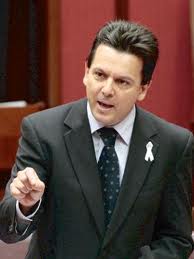
 of
its workers and passengers. For a long time, Qantas management has
been pushing the line that Qantas international is losing money and
that Jetstar is profitable. Tonight, it is imperative to expose
those claims for the misinformation they are. The reality is that
Qantas has long been used to subsidise Jetstar in order to make
Jetstar look profitable and Qantas look like a burden. In a moment,
I will provide detailed allegations of cost-shifting that I have
sourced from within the Qantas Group, and when you know the facts
you quickly see a pattern. When there is a cost to be paid, Qantas
pays it, and when there is a profit to be made, Jetstar makes it.
of
its workers and passengers. For a long time, Qantas management has
been pushing the line that Qantas international is losing money and
that Jetstar is profitable. Tonight, it is imperative to expose
those claims for the misinformation they are. The reality is that
Qantas has long been used to subsidise Jetstar in order to make
Jetstar look profitable and Qantas look like a burden. In a moment,
I will provide detailed allegations of cost-shifting that I have
sourced from within the Qantas Group, and when you know the facts
you quickly see a pattern. When there is a cost to be paid, Qantas
pays it, and when there is a profit to be made, Jetstar makes it.
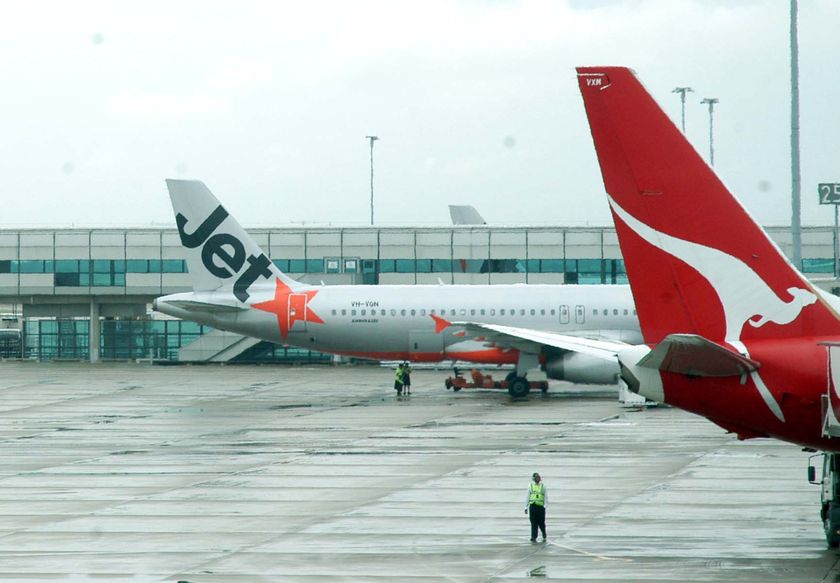
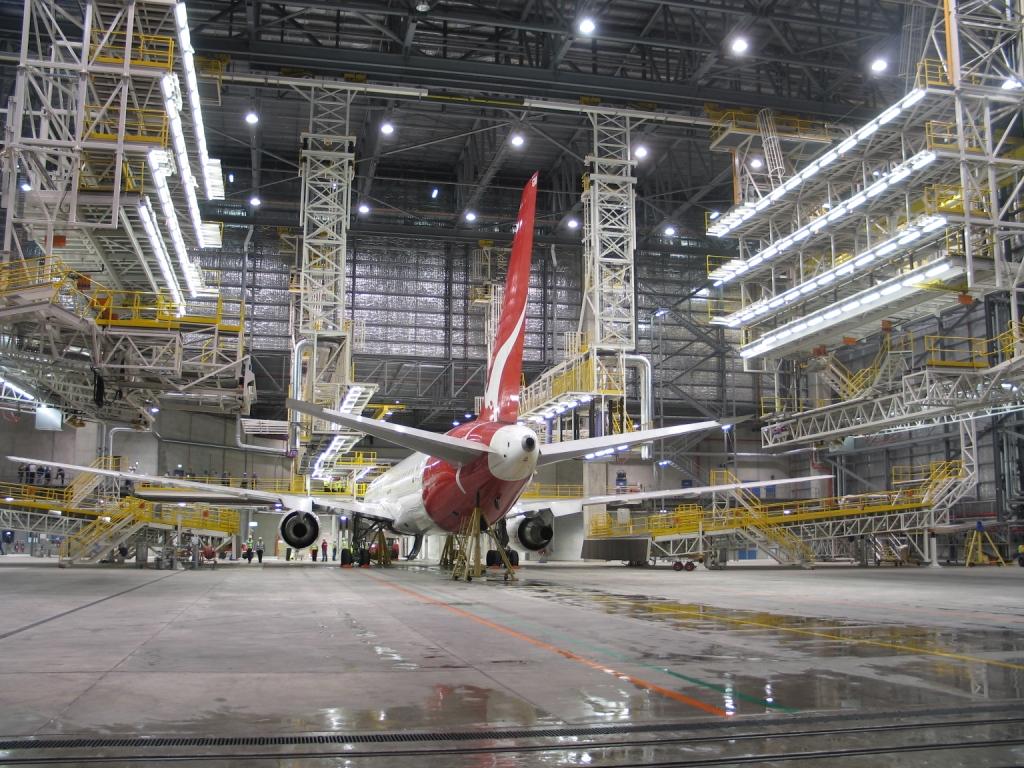 of
Australians have literally entrusted their lives The Australian and
International Pilots Association sees Qantas management strategy as
a race to the bottom when it comes to service and safety. On 8
November last year, QF32 experienced a serious malfunction with the
explosion of an engine on an A380 aircraft. In the wrong hands, that
plane could have crashed. But it did not, in large part because the
Qantas flight crew had been trained to exemplary world-class
standards and knew how to cope with such a terrifying reality. I am
deeply concerned that what is being pursued may well cause training
levels to fall and that as a result safety standards in the Qantas
Group may fall as well. AIPA pilots and the licensed aircraft
engineers are not fighting for themselves; they are fighting for the
Australian public. That is why I am deeply concerned about any
action Qantas management may be considering taking against pilots
who speak out in the public interest.
of
Australians have literally entrusted their lives The Australian and
International Pilots Association sees Qantas management strategy as
a race to the bottom when it comes to service and safety. On 8
November last year, QF32 experienced a serious malfunction with the
explosion of an engine on an A380 aircraft. In the wrong hands, that
plane could have crashed. But it did not, in large part because the
Qantas flight crew had been trained to exemplary world-class
standards and knew how to cope with such a terrifying reality. I am
deeply concerned that what is being pursued may well cause training
levels to fall and that as a result safety standards in the Qantas
Group may fall as well. AIPA pilots and the licensed aircraft
engineers are not fighting for themselves; they are fighting for the
Australian public. That is why I am deeply concerned about any
action Qantas management may be considering taking against pilots
who speak out in the public interest. 
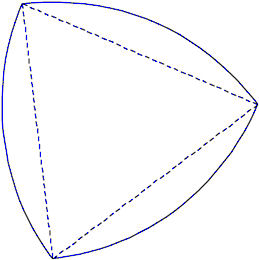
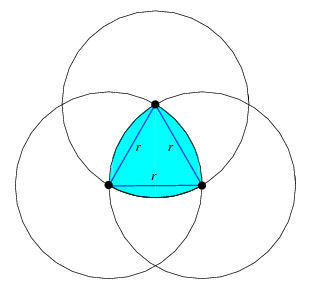
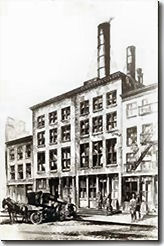
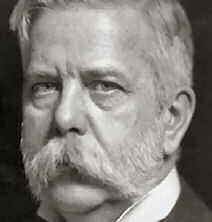
 50
times each second. In our single phase “out of the power point”
voltage, the maximum voltage at the top of the wave is +340 volts
and the minimum is -340 volts. The 240 bit is the RMS (or average)
of the wave. The term “RMS” stands for “Root-Mean-Squared” which can
simply be described as the “amount of AC power that produces the
same heating effect as an equivalent DC power”.
50
times each second. In our single phase “out of the power point”
voltage, the maximum voltage at the top of the wave is +340 volts
and the minimum is -340 volts. The 240 bit is the RMS (or average)
of the wave. The term “RMS” stands for “Root-Mean-Squared” which can
simply be described as the “amount of AC power that produces the
same heating effect as an equivalent DC power”.
